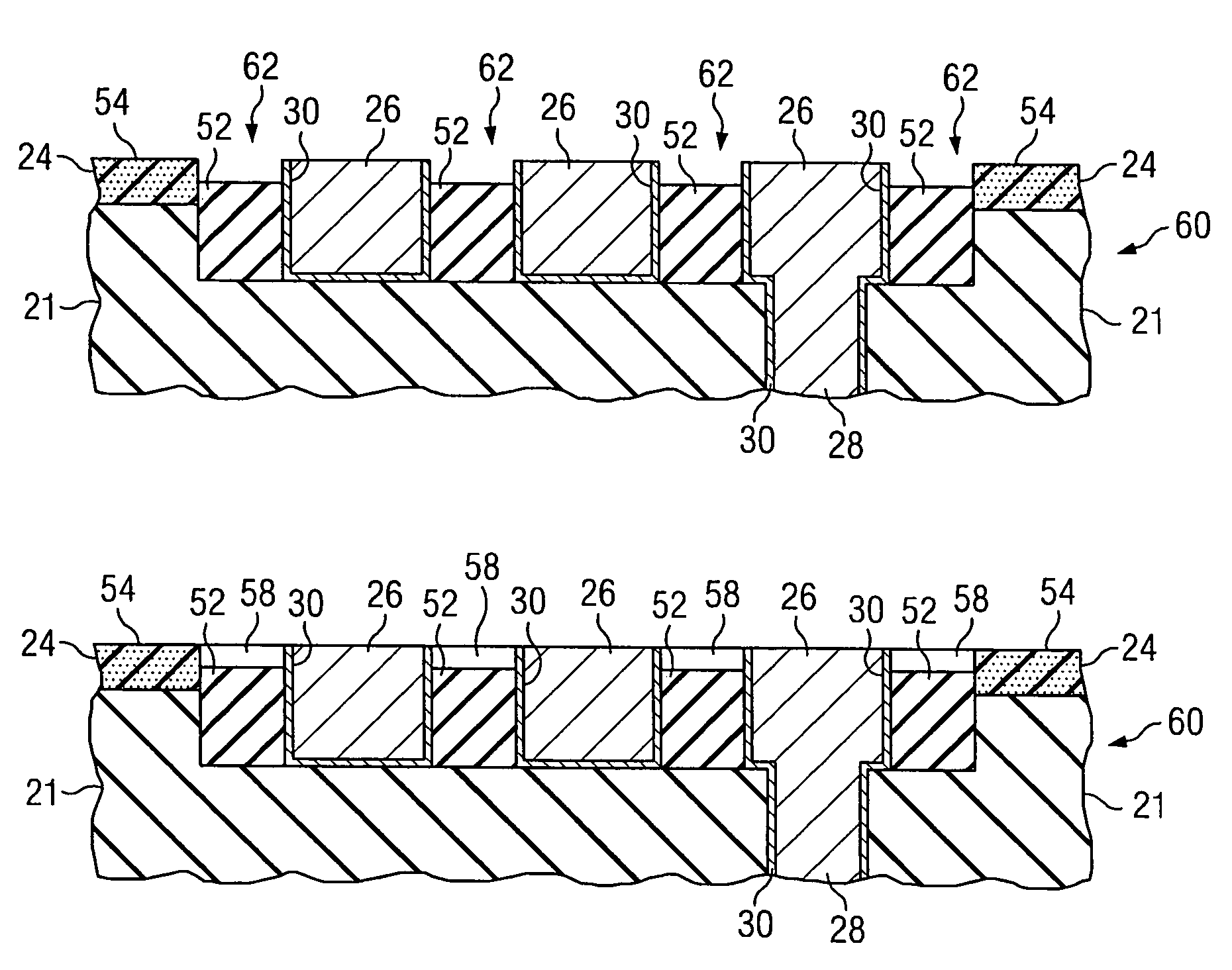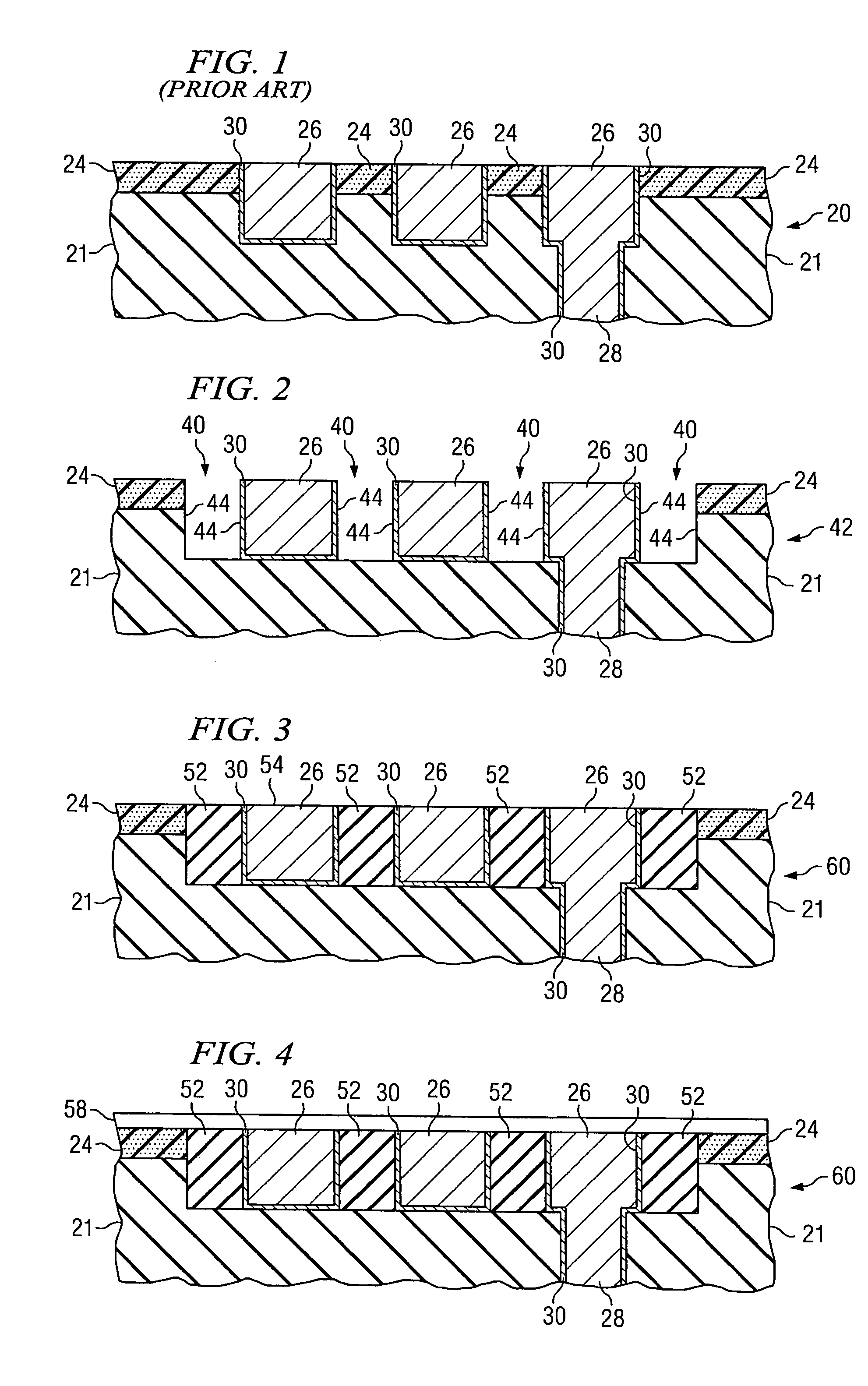Composite intermetal dielectric structure including low-k dielectric material
a dielectric structure and intermetal technology, applied in the direction of basic electric elements, electrical apparatus, semiconductor devices, etc., can solve the problems of limiting the operating speed of semiconductor devices, delay in switching, and incompatibility of many low-k dielectric materials having desirable electrical properties with other adjacent materials and/or processes used
- Summary
- Abstract
- Description
- Claims
- Application Information
AI Technical Summary
Benefits of technology
Problems solved by technology
Method used
Image
Examples
Embodiment Construction
[0024]Referring now to the drawings, wherein like reference numbers are used herein to designate like elements throughout the various views, illustrative embodiments of the present invention are shown and described. The figures are not necessarily drawn to scale, and in some instances the drawings have been exaggerated and / or simplified in places for illustrative purposes only. One of ordinary skill in the art will appreciate the many possible applications and variations of the present invention based on the following illustrative embodiments of the present invention.
[0025]Generally, an embodiment of the present invention provides a composite low-k structure and methods of fabricating the same. FIGS. 2 and 3 illustrate a method of fabricating a composite low-k magnetic structure in accordance with a first embodiment of the present invention. FIG. 1 is a cross-section view of a portion from a semiconductor device focusing on an intermetal dielectric structure 20. The conventional int...
PUM
| Property | Measurement | Unit |
|---|---|---|
| dielectric constant | aaaaa | aaaaa |
| dielectric constant | aaaaa | aaaaa |
| dielectric constant | aaaaa | aaaaa |
Abstract
Description
Claims
Application Information
 Login to View More
Login to View More - R&D
- Intellectual Property
- Life Sciences
- Materials
- Tech Scout
- Unparalleled Data Quality
- Higher Quality Content
- 60% Fewer Hallucinations
Browse by: Latest US Patents, China's latest patents, Technical Efficacy Thesaurus, Application Domain, Technology Topic, Popular Technical Reports.
© 2025 PatSnap. All rights reserved.Legal|Privacy policy|Modern Slavery Act Transparency Statement|Sitemap|About US| Contact US: help@patsnap.com



